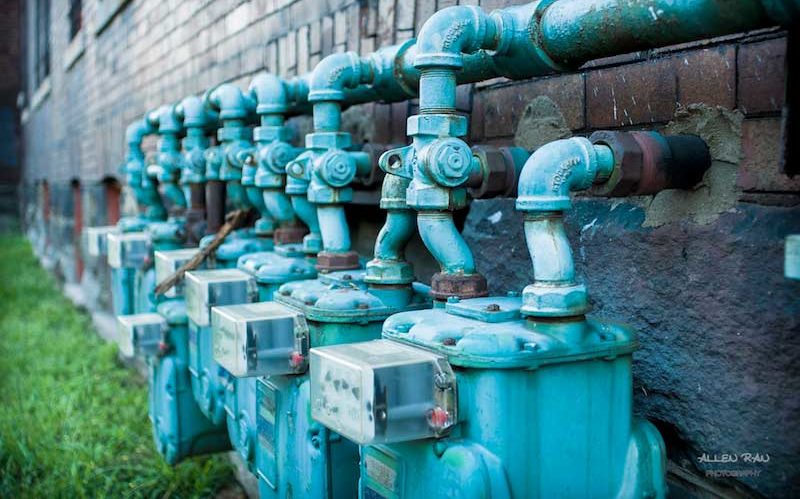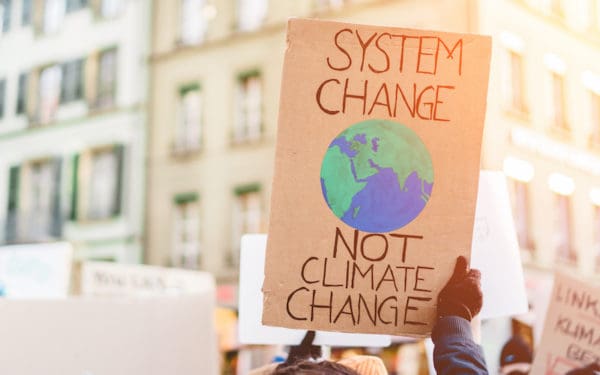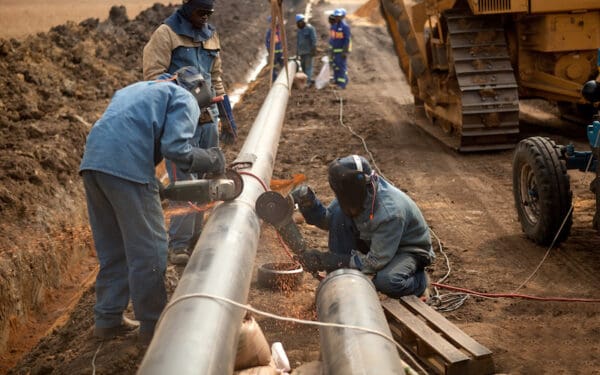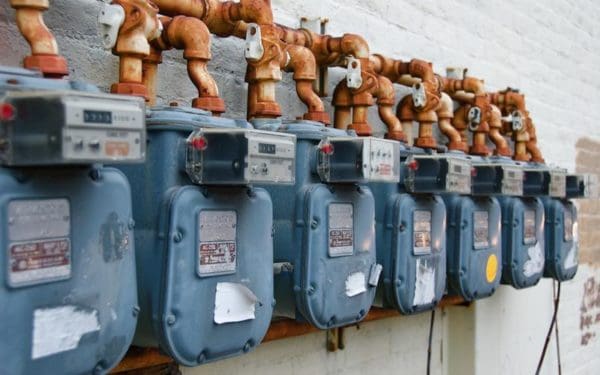
Photo: Ran Allen via Creative Commons 2.0
Solar panels on your neighborhood library’s roof? Smart thermostats? Light bulbs that can be turned on with a smart phone? Is your electric utility making the best use of these new technologies? Probably not.
Most utilities are old-fashioned, and don’t know how to integrate innovative technology into the electric system. That’s where grid modernization comes in. It’s a nice way to say bringing utilities into the 21st century.
And the stakes are high if we don’t update the way utilities do things. We can’t easily address climate change without updating this system, which was designed before today’s clean energy technologies existed—and before we knew climate change was a threat.
Grid Modernization: A Makeover for Your Local Utility
Part of modernizing our electric grid is about improving the physical framework – for example, updating old pole-and-wire systems to better incorporate rooftop solar panels so that there can be a two-way flow of energy from our homes to the grid and back (instead of the old-fashioned one-way flow). Another example is installing smart meters to show us our minute-by-minute energy use so that families and companies can identify what’s driving their energy use up in order to help lower their bills and reduce pollution.
But a lot of modernizing our electric grid is about changing the policies that tell utilities how to do business. Most of these policy changes start at Public Utilities Commissions (PUC) or Departments of Public Utilities (DPU) – the state agency that helps keep the lights from going out and that creates the rules that utility companies must follow. In exchange for being awarded a monopoly over a specific area, each utility commits to follow the rules created by the state utilities agency. So when we advocate for important policy changes at the PUC or DPU – like policies to update our electricity grid – it can make a big difference to families and the environment.
For grid modernization, there are three main areas of change: incentives, competition, and intelligence.
-
Incentives.
Utilities provide a vital service, but they are also businesses – most of them are owned by investors who want to make a profit. Right now, utilities make profits off big investments in physical infrastructure, like power lines and substations, and by selling more and more electricity. Normally, there’s not much incentive for them to help consumers like you and me save electricity or operate our homes and businesses more efficiently – because that would lower their profit margins.
But we can change the rules of the game by updating the way we pay our utilities, and how we reward them for good work.
Instead of paying a utility for selling more electricity, we can change the rules that the state utilities agency uses to pay them, to give the utility a bonus when it ramps up energy efficiency. And we can stop linking utility pay to the volume of electric sales. Decoupling refers to policies designed to separate utility profits from total electric or gas sales, to end the utility’s motivation to sell more and more energy, particularly when consumers like us don’t really want or need it.
Changing these incentives saves families and businesses money – it also helps utilities move away from building expensive new power lines and ugly substations, and towards supporting increased rooftop solar, batteries, and energy savings.
-
Strengthening competition and customer choice.
We also need space for competition. Right now, our local utility has a monopoly not just over the power lines that deliver energy to our houses. They also have total control over information about the electricity system and about customer usage.
They don’t even have to give that information to us, the customers who are paying for it all. In the old days, this wasn’t a big deal, because we couldn’t do much with that information anyway. But now, innovators like Apple and Google (and other local companies) are waiting in the wings to offer us home energy solutions that will cut costs and make our lives easier – like connecting our appliances and power systems to a central information system that we can control. But first, they need information about how we use energy. And we can’t share that information with innovators if we don’t have it ourselves.
So what can consumers like us do? We can insist on minimum standards for data collection, for customer transparency, and for access to anonymous information by third-party innovators. By changing the rules to ensure transparency, we open up the system for clean innovations like smart home controls and targeted renewable energy – and provide consumers like you and me with a lot more choice about how we run our own homes.
-
Bringing intelligent software and smart tech to an old-fashioned system.
Modernizing our electric grid can also mean creating a “smart grid.” We make our system smarter mainly by updating our technology and infrastructure. This can help ramp up energy efficiency with controllable street lights, enable the grid to use electric vehicles as backup power sources, or cut our monthly bills by lowering the price of electricity when market rates drop. A smarter grid also helps us better integrate more renewable energy like wind and solar, and helps keep the lights on even when big storms sweep through.
Another example: smart technology that tells your hot water heater to lower the temperature when it’s hot outside. Choices like this one don’t just allow you to save money; they eliminate the need for the dirtiest power plants, which only get switched on during the hottest days each year.
Grid Modernization Saves Us Money and Helps Fight Climate Change
Modernizing our electricity grid is a mix of policy changes and smaller investments that make the clean energy transformation possible. With a modern electric grid and the right utility incentives, we can support energy efficiency, keep the lights on, and keep our air, water, and climate safe.
It’s time for New England’s utilities to embrace the modern age. When we make the grid faster, smarter, and open to using the newest tech, then we can respond quickly to climate change and give consumers what they want – awesome, money-saving choices that help make families and businesses happy while preserving the environment.
That’s why we’re on the case. Stay tuned for more on how CLF is transforming the utility grid in your neighborhood.




